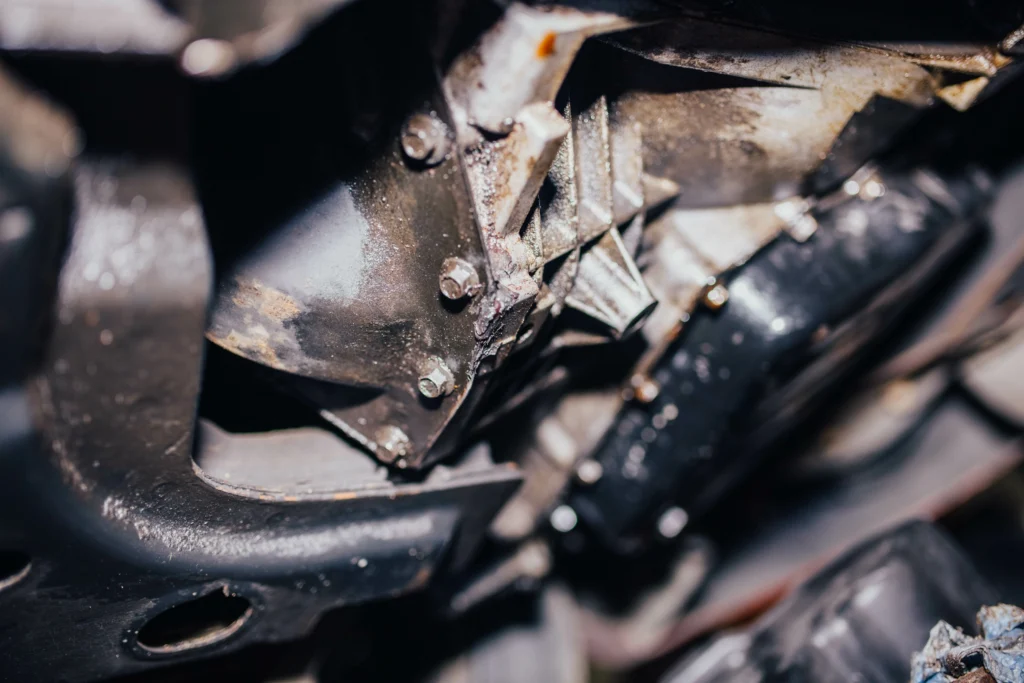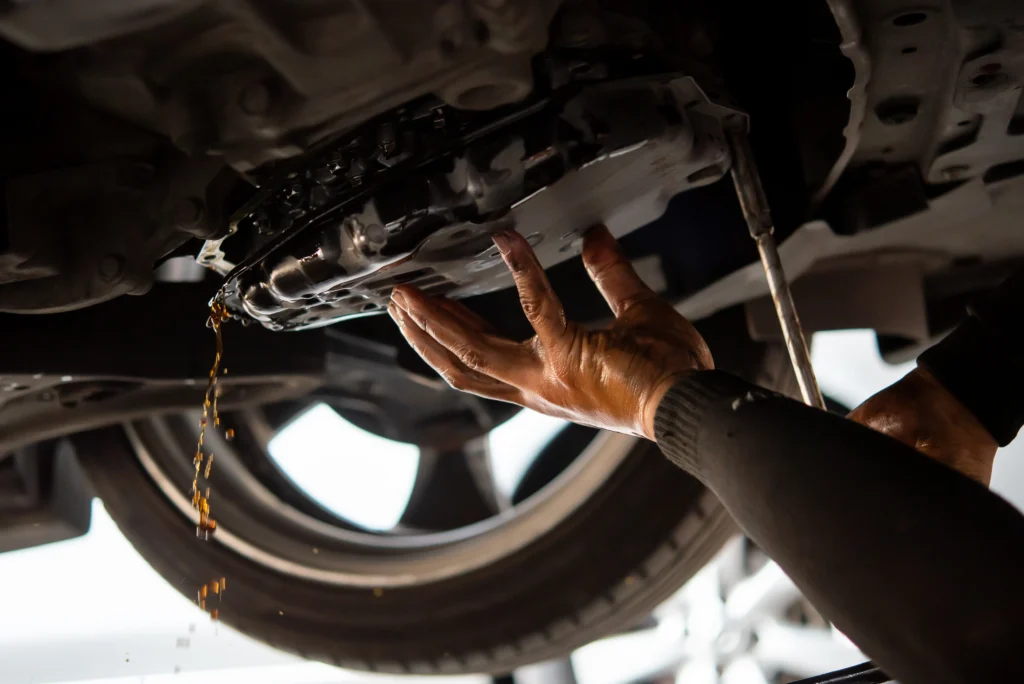
Transmission fluid plays a vital role in keeping your vehicle’s transmission running smoothly in Scott AFB, IL. It lubricates, cools, and powers various components that keep your car shifting smoothly. But when you spot a reddish fluid pooling beneath your vehicle or notice a sudden change in shifting performance, you may be dealing with a transmission line leak—and it’s not something to ignore. Here’s how to handle a transmission line leak before it leads to bigger (and more expensive) problems.
Confirm the Leak is Transmission Fluid
Transmission fluid is usually bright red, though it may darken with age. If you spot fluid underneath your vehicle, identify where it’s coming from. If the fluid is near the front of your vehicle and has a red or pink tint, there’s a good chance it’s coming from the transmission cooler lines. Other signs of a leak can include slipping gears, hard shifting, delayed engagement when putting the vehicle in gear, or a burning smell. If you’re unsure, place a piece of cardboard under the car overnight to catch the leak and compare the fluid color. Power steering fluid and engine oil can sometimes be mistaken for transmission fluid, so be sure before moving forward.
Check the Transmission Fluid Level
Next, check your transmission fluid level using the dipstick, if your vehicle is equipped with one. This will help you determine the severity of the leak. Low fluid levels can damage the transmission quickly, so don’t wait too long to act. If the level is low, top it off with the recommended transmission fluid for your vehicle—but don’t rely on topping it off as a long-term fix. You still need to address the underlying leak.
Locate the Leak
Most transmission line leaks occur at the hose connections or where metal and rubber lines meet. Inspect the area near the radiator, where transmission lines often run to help with cooling. Look for cracks, loose clamps, corroded fittings, or wet spots on the lines. If the lines are cracked or the fittings are damaged, it’s best not to attempt a temporary repair with tape or sealant. These fixes rarely hold under pressure and could make matters worse.
Replace or Repair the Lines
Depending on the extent of the damage, the solution might be tightening a loose clamp, replacing a rubber hose, or installing new steel lines. Many auto parts stores carry direct replacement transmission cooler lines for common makes and models. If you’re comfortable with car repairs, you can replace them yourself. Just make sure the vehicle is safely lifted and supported. However, if the leak is extensive or if you’re unsure about the repair, it’s best to leave it to a professional mechanic. They’ll ensure the lines are correctly installed and properly bled of air, so your transmission runs smoothly.
Test and Monitor
After the repair, refill the transmission fluid to the appropriate level and run the engine while shifting through the gears. Keep an eye out for any fresh leaks and continue checking the fluid level regularly over the next few days. If you notice the fluid dropping again, there may be another issue that needs attention.

Don’t Ignore a Leak
A leaking transmission line isn’t just messy—it’s a warning sign. Addressing the issue early and handling it properly can help you avoid serious transmission damage and expensive repairs later on. If you ever have doubts, trust a professional around the Scott AFB, IL area to inspect and repair the issue safely.
Make sure you give Marshall’s Transmission Service today if you are looking for an auto repair shop near Scott AFB, IL who can fix your vehicle’s transmission line leak.




